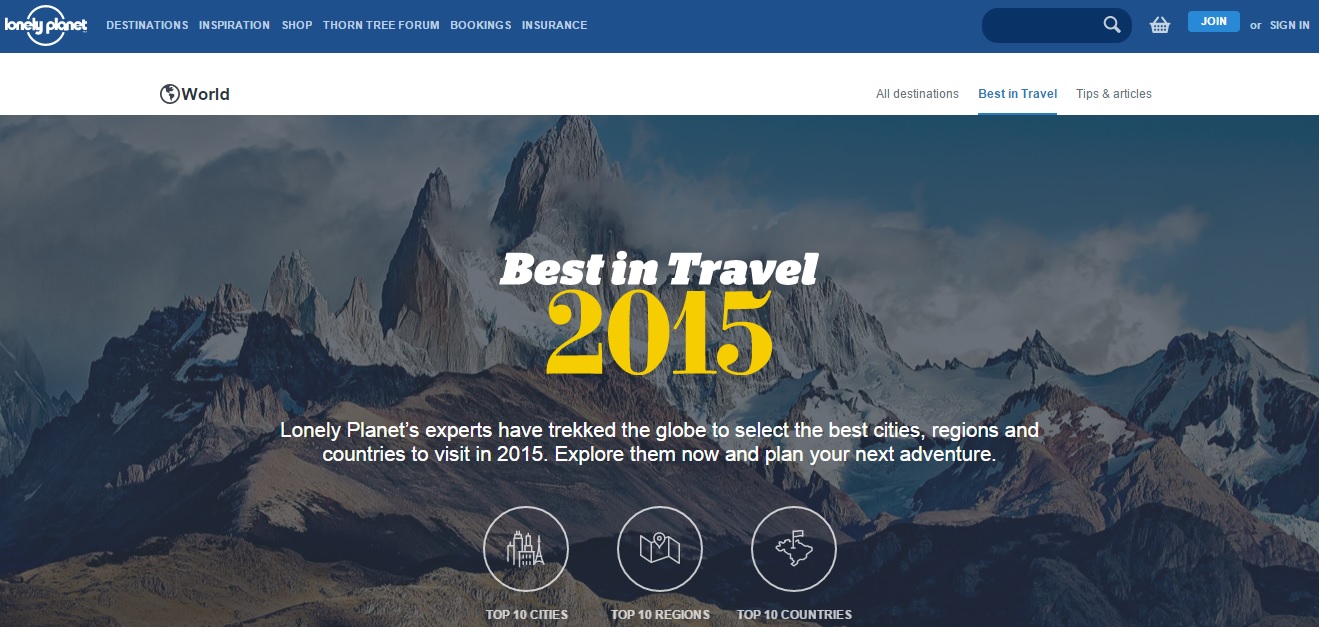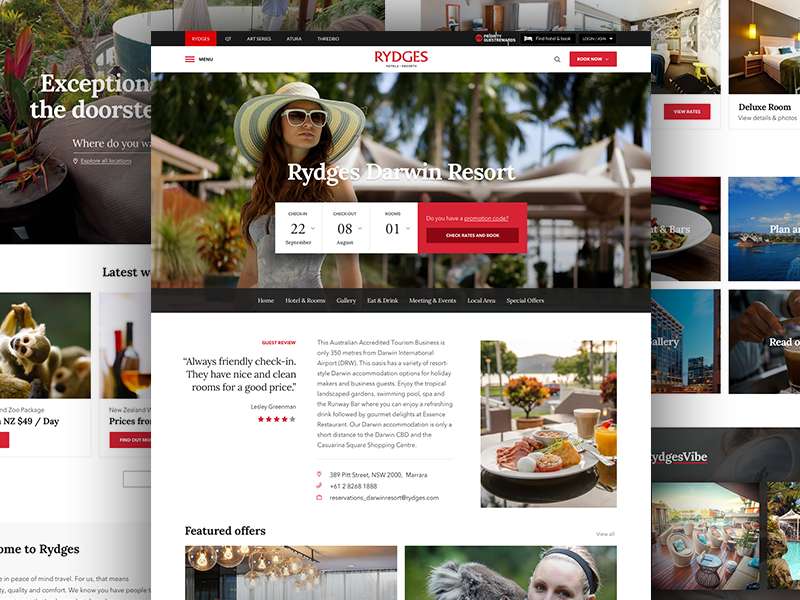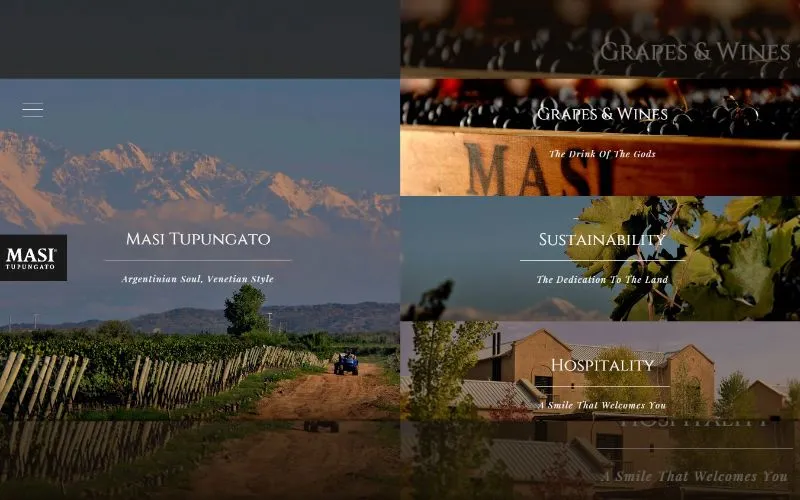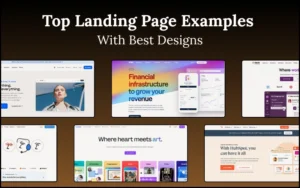When planning their next holiday, they move away from browsing through brochures to doing most of their research online. Therefore, if you have a travel agency as a client, you must offer them a well-designed and up-to-date travel website design.
Here are the main aspects that you need to consider for best travel website design:
Table of contents
- Design Attractive Homepage
- Include Contact Information
- Facilitate Easy Navigation
- Keep Simple URL
- Add Testimonials From Customers
- Search Box Is Important
- Display Clear & Accurate Pricing
- Stability In Best Travel Site Design
- Call To Action For Unique Travel Site Design
- Unique Content For Best Travel Website Design
- Proper Use Of Images
- Conclusion: Travel Website Design
Design Attractive Homepage

Image source: Ricardo Salazar
The homepage is the perfect place to introduce your agency and tell any potential customers what it is that makes your business special.
This is also the page that search engines will use first to detect what your travel agency website design is about, so make sure you include the main keywords and phrases that people may look for on your travel website design.
Just consider the specifics of your business and the services that you provide and mirror them in these key-words.
Check out this blog for an in-depth look at web design basics.
Include Contact Information

Image source: letstravelsomewhere.com
It would be best if you made it as easy as possible for clients to contact you to discuss and plan their holiday. It is a good idea to provide a telephone number and an email address.
Having a form which people can use to ask for more information is also a good idea. Gathering all these contact details in the same place makes them easier to find and use.
Also read: Best Fonts To Use For Your Websites and Blogs
Facilitate Easy Navigation

Image source: zicasso.com
You will want the visitors of your site to be able to find exactly what they are looking for, otherwise, you run the risk of having them giving up and looking elsewhere.
All your pages should be clearly labeled so that a user is able to immediately get to the page he needs. It can also be useful to bring together the services that customers may be looking for at the same time – for instance, flights and hotels.
Keep Simple URL

Image source: lonelyplanet.com
It would be best to choose a name for your travel website design that is easy for people to remember and find online. It should be something that one is able to type straight into the navigation bar. So a short title may work best, as people are more likely to remember this.
Having a .com address can also be useful because we are more used to typing this straight into the browser.
Take the example of Lonely Planet: it is a memorable phrase, short and catchy, easy to type and find online, and the travel site design has a .com address.
Also read: Websites with Large Background Images
Add Testimonials From Customers

Image source: tripadvisor.com
Word of mouth is one of the most effective forms of advertising, so having testimonials from existing customers can help persuade visitors that they should book their holiday through your site.
Testimonials can be located anywhere on the site. You may choose to use a dedicated page or to have them located on your website design for travel in relevant places.
Search Box Is Important

Image source: Kenneth Del Prado
Having a search box allows people to narrow down their choices, helping them to find the holiday that they are looking for. However, you should ensure that the search box is easy to use, as anything that is too complicated may put people off.
You can always add an advanced search field for users who prefer to make a more in-depth search.
Also read: Most Popular Discount Websites for Web Design Resources
Display Clear & Accurate Pricing

Image source: Gökhan Kurt
When people see a price for a holiday, they will want to be sure that this is the price that they are going to pay. Therefore, you should ensure that it is clear what the price quoted on your website includes, and whether there are likely to be any extra fees.
Having prices that are transparent is an excellent way to build up a trusting relationship with your clients, and this will encourage them to keep coming back.
Also read: Websites using Fullscreen Menus
Stability In Best Travel Site Design

Image source: Thomas Habr
Ensuring that your travel website design is stable is another important consideration. If you have links that do not always work or pages that won’t load, it won’t take long before visitors start to lose patience and look elsewhere.
This is something that only takes a few minutes every day to check and is an exercise that is well worth doing in order to adjust any problems that are found.
Also read: Most Used Websites to Create Awesome GIFs
Call To Action For Unique Travel Site Design

Image source: Patrick Monkel
When a customer has found a holiday that he is interested in, it should be absolutely clear what he needs to do next in order to book it.
You risk losing clients if they want to make a purchase and are not sure what they need to do next.
Also read: Top Stock Photography Websites Every Designer Should Know
Unique Content For Best Travel Website Design

Image source: Greg Dlubacz
When you are concentrating on getting the design of your website right, it can be easy to overlook the content that is actually going on it.
However, this is the most important part of the website; if customers like what they find, then they will keep coming back. It is also another opportunity to convey to your customers what it is that makes your travel agency stand out from the rest.
Proper Use Of Images

Image source: sayulitabeach.com
Nothing will help more in getting your customers in the mood for a holiday than pictures of blue skies and sandy beaches. Including these types of images on your website can really help to encourage your visitors to book a holiday.
It may also be useful to have pictures of hotels which can be booked through your agency.
Conclusion: Travel Website Design

Image source: Mikha Makhoul
Although some of these ideas are very general, they can help you create travel agency website that is also very functional.
In this manner you will attract more visitors to your site, converting them into paying customers once they are there. Setting up a website may be hard work, but the dividends will soon begin to pay off when you are increasing your customer base and making more sales.
Credit for featured image: masitupungato.com
Like this post? Check out more amazing web design content here.





